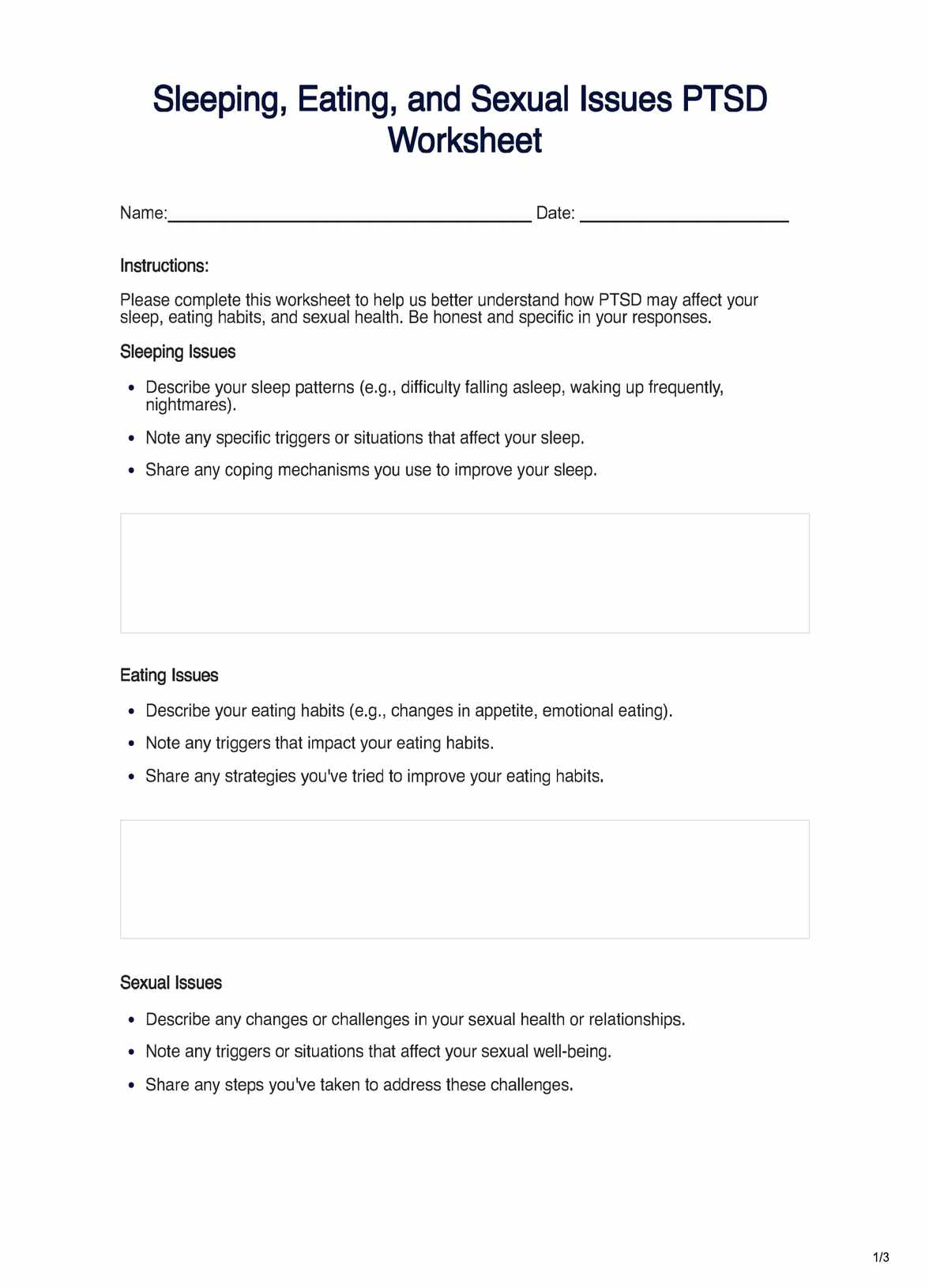The time required to complete the worksheet varies depending on individual reflection and detail, but it typically takes 30 minutes to an hour.

Sleeping, Eating, and Sexual Issues PTSD Worksheet
Discover how the Sleeping, Eating, and Sexual Issues PTSD Worksheet can help address PTSD-related challenges. Download now for self-assessment and support.
Use Template
Sleeping, Eating, and Sexual Issues PTSD Worksheet Template
Commonly asked questions
This worksheet helps individuals identify, assess, and address how PTSD impacts their sleep, eating, and sexual health, fostering self-awareness and goal-setting for improvement.
The worksheet is designed for individuals with PTSD and can also be used by mental health professionals to guide therapy or self-help sessions.
EHR and practice management software
Get started for free
*No credit card required
Free
$0/usd
Unlimited clients
Telehealth
1GB of storage
Client portal text
Automated billing and online payments











